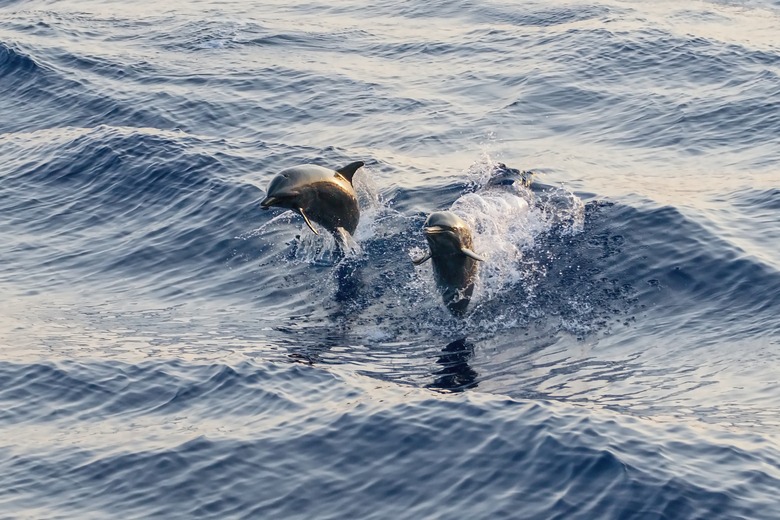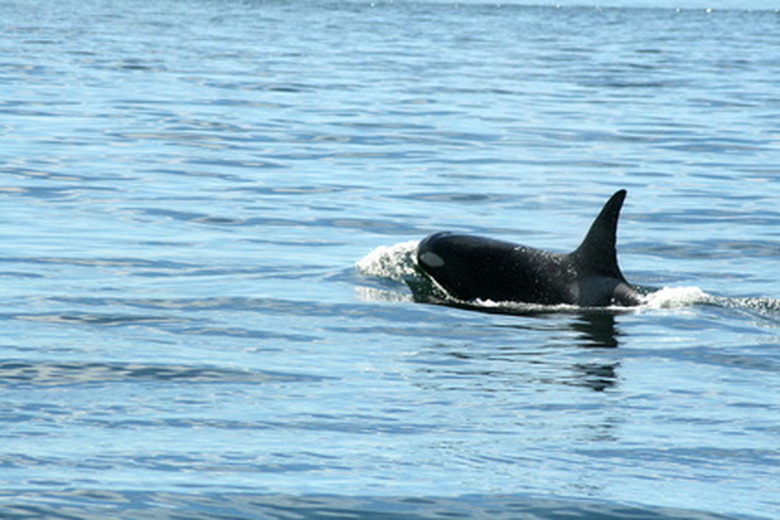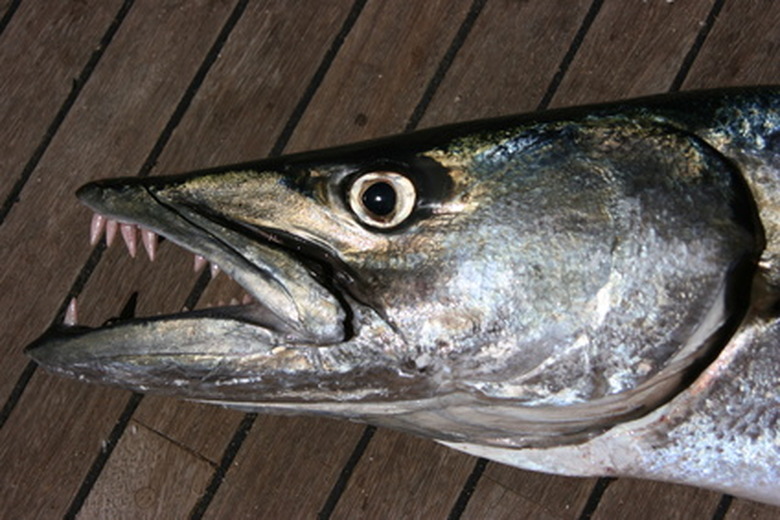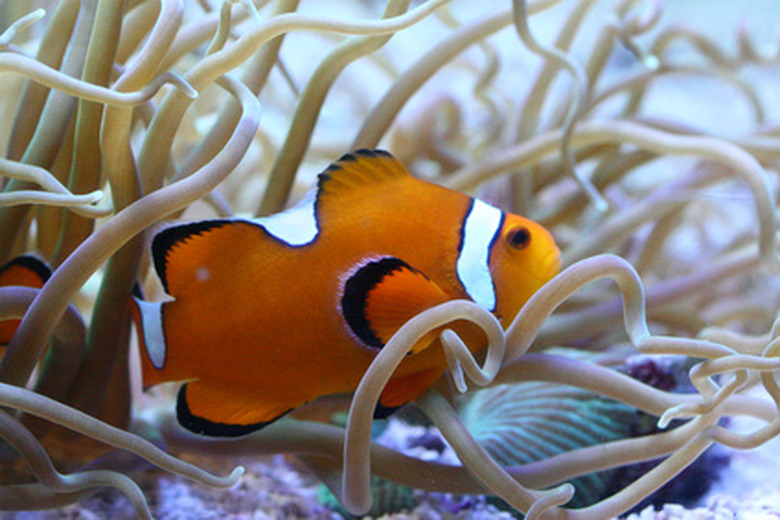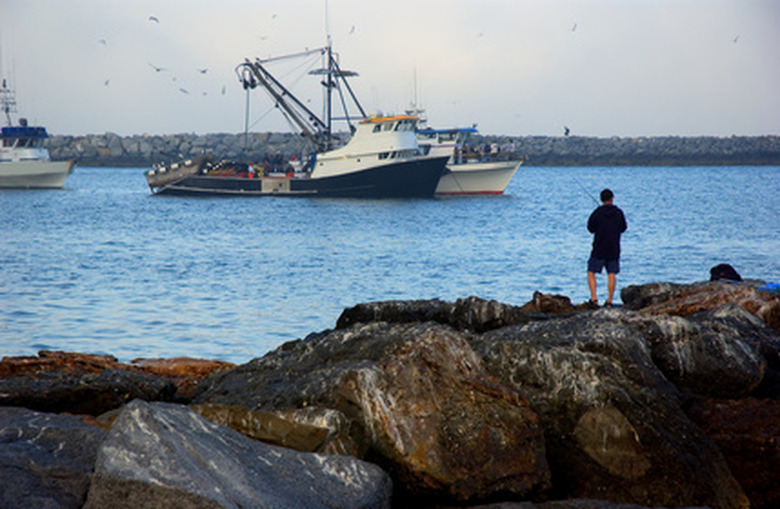Animals That Live In The Bottlenose Dolphin's Habitat
Bottlenose dolphin habitat is found worldwide. The animals prefer a temperate and tropical climate and can be found in both the Atlantic and Pacific oceans, as far north as Norway and Nova Scotia, as far south as South Africa, near Japan and California and south to Australia and Chile. Bottlenose dolphin environment includes the open ocean and they can be found in Hawaii and Polynesia. Because of the wide distribution of the bottlenose dolphin biome, the marine animals that share their habitats vary from one ocean climate to another.
The Atlantic Bottlenose Habitat
The Atlantic Bottlenose Habitat
Bottlenose dolphins living in the Atlantic Ocean share their habitat with jellyfish, seals and several different whale species including humpback whales. These dolphins feed primarily on herring, halibut and cod. They also eat squid, lobster and crab species. Although the bottlenose dolphin is one of the greatest marine predators, they are sometimes the prey of larger orcas and sharks. The great white and tiger species of shark can be found in Atlantic waters, along with several other smaller species.
The Pacific Bottlenose Habitat
The Pacific Bottlenose Habitat
Bottlenose dolphins in the Pacific Ocean share their habitat with otters, seals and sea lions. Many whale species can also be found in the Pacific, including the blue whale. Herring and mackerel make up the bulk of the Pacific dolphin's diet and share the deep water with large fish species like tuna and swordfish. Several salmon species and even barracuda can be found in the dolphin's Pacific Ocean habitat.
The Tropical Bottlenose Habitat
The Tropical Bottlenose Habitat
While dolphins feed on similar fish species in every climate, the tropical bottlenose shares its habitat with larger variety of creatures such as blue marlin, moray eels, hammerhead sharks and manta rays. The whale shark, a giant, plankton-eating fish, shares the deep water with dolphins and coral reefs make up much of the shallower water. Parrotfish, puffer fish, clownfish and many other smaller species live close to these reefs along with urchins, sea stars and other invertebrates.
Human Impact on Dolphin Habitats
Human Impact on Dolphin Habitats
Humans are responsible for harming the habitats of bottlenose dolphins and the creatures that share these habitats. Overfishing has depleted cod and other fish populations that are a dolphin's main food source. Humans are also responsible for tuna fishing nets that catch dolphins and other creatures, injuring and killing them. Pollution from plastics and pesticides has also been shown to harm dolphins. Noise pollution from military sonar interferes with the echolocation of dolphins and whales. Humans are responsible for protecting and cleaning dolphin habitats from this waste and pollution.
Cite This Article
MLA
Bergsma, Randi. "Animals That Live In The Bottlenose Dolphin's Habitat" sciencing.com, https://www.sciencing.com/animals-live-bottlenose-dolphins-habitat-7880205/. 22 November 2019.
APA
Bergsma, Randi. (2019, November 22). Animals That Live In The Bottlenose Dolphin's Habitat. sciencing.com. Retrieved from https://www.sciencing.com/animals-live-bottlenose-dolphins-habitat-7880205/
Chicago
Bergsma, Randi. Animals That Live In The Bottlenose Dolphin's Habitat last modified March 24, 2022. https://www.sciencing.com/animals-live-bottlenose-dolphins-habitat-7880205/
